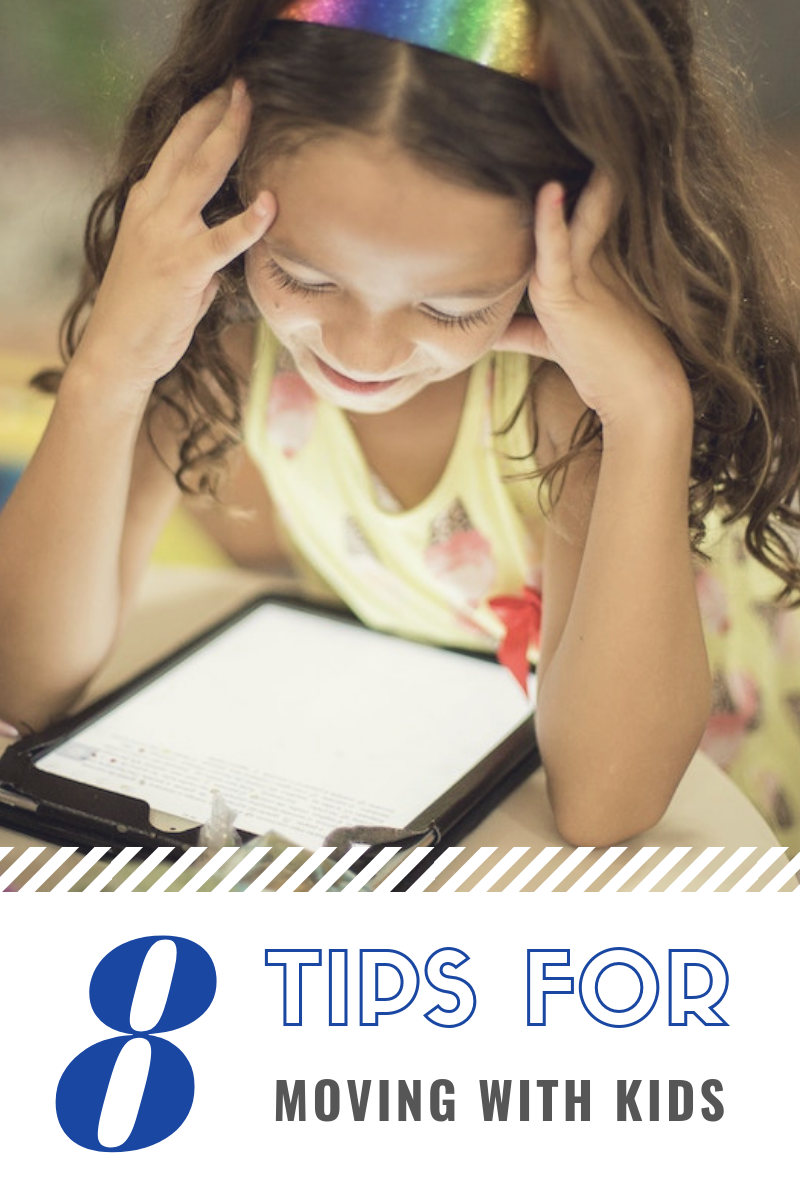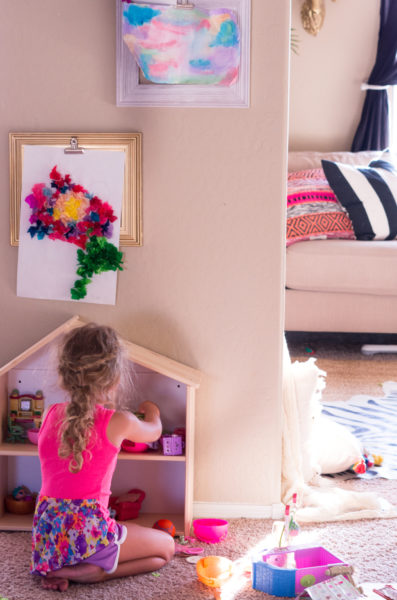
Are you moving with kids? While moving is a lot less complicated for children than it is for grownups, it is equally stressful. Kids feel safe at home, in their own rooms and neighborhoods, with the school and friends they know. While the great unknown brings excitement, it can also bring out anxiety.
Luckily, the steps below can help you make kids more comfortable with relocating. If you move a lot for the military or for a job that keeps you hopping, put these ideas on your moving checklist and be sure to address them every time.
Moving Tips for Families
1. Tell your children about the move in the right way.
Most parents wouldn’t wake up on moving day and announce to their children, “Well, we’re leaving everything behind and moving to a new city today!”
That doesn’t mean simply telling them ahead of time is enough, though. You have to tell them in the right way.
Make sure you’re all together as a family when you break the news. Tell your kids before you tell other grownups who might spill the news to them. Naturally, you will have adult confidantes who likely know about the move before your children, but you’ll want to hold off on telling teachers, parents of friends, etc., until your kids themselves know.
2. Make the move as concrete as possible.

Even with the best of intentions, many parents still fail to prepare their children for a move adequately. If you tell kids about the move and leave it at that, all they know is what they’re leaving behind: school, neighborhood kids, possibly grandparents, their special bedroom and so on.
It’s very important that parents rather emphasize what kids are moving toward, including:
- A new school
- A new home, with emphasis on desirable amenities that aren’t available at your old home (a backyard, a bedroom for everyone, etc.)
- Different weather or landscapes
- Unique features of the new town (Any children’s museums close by, perhaps, or large playgrounds?)
It’s also important to clarify what and who all is coming on this new adventure. Even if your kids are older—in the 7-8 range—tell them outright that you and your partner (if you have one) are both coming, as well as siblings, pets and other treasured items.
3. Visit your new hometown.
Take a weekend to visit your new hometown before making the move permanent. Take your child to your new neighborhood, by their new school and to a fun landmark before heading home.
This will give your child better visuals of their new hometown and will probably calm some pre-move jitters. Adding in a fun landmark gives the child a positive memory to associate with your new hometown.
4. Avoid packing up your child’s beloved objects.

When you’re in the thick of packing, it’s natural to want to clear away as much mess as possible – and heck if the kids don’t seem to work against you at every step.
While the urge to pile those toys and stuffies into a box to get them out of the way “for now” is strong, it’s not the nicest approach. When you’re busy and harried, your home is a tumbled mess and the reality of moving sinks in, your kids really need something to hold onto.
So while it may pain you, take extra care to leave the things they love out and visible. That means their favorite blankets, toys, dishes and utensils, art projects, etc. This is especially true when moving with toddlers. If they like to hide behind a certain chair or play in a certain sunny windowsill, leave those open as well rather than covering them with boxes.
Right now, and until you can create a new life, it’s best to leave the old one as familiar as possible.
5. Offer kids as much information as you can.
The easiest way to help a child cope with moving house is to keep them informed. Don’t leave kids out in the cold when it comes to details. Give them as much information about their new lives as possible, including:
- Your new address
- The name of their school
- The name of their neighborhood
- The reason you’re moving
- The name of your work/your spouse’s work
These might seem like details kids don’t “need,” but like anyone else, children like to feel as though they’re in the loop. This way, when teachers, family friends or other adults ask kids about their new life, they have real details to share.
Plus, this is good safety information and important to drill in ahead of time.
6. Break out the fun projects.

Hopefully your children get to skip most of moving day, hanging out with grandparents elsewhere or riding in a separate car from the moving van.
That doesn’t take care of them the rest of the time, however. Packing is a long process. Neither you nor the kids will be happy if they have nothing to do but bug you while you get ready.
Have older children who are moody about leaving middle or high school friends behind? See if you can interest them in these easy room décor ideas to deck out their new space.
7. Let them do some decorating.

Sometimes letting go of control is a good way to help ease the stress of relocating to a different city.
Let your child help with the decorating of their new room. Let them pick out their new wall color or bedspread. Maybe even get some cool bunk beds if they will be sharing a room with siblings. This gives your child something to look forward to when they arrive at their new home.
Another place where they can lend a hand is in the den or playroom. This is a place where the room can have a very fun vibe with bright colors and artwork.
8. Bribe them with treats.

What, you thought we wouldn’t approve of bribes? Oh, we do.
While children work hard to please their parents, intrinsic motivation – the desire to behave for the sake of virtue – only goes so far. Then you have to break out the goods: treats, toys and special time.
When you need kids to stay out of your hair for packing, or even more demanding jobs such as staging your home, it helps to offer a reward. It can be a coveted treat, a new educational app, or the promise of some special time together later.
Rewards like these also help:
- To keep kids quiet when you’re planning with movers/other service providers, either in person or on the phone.
- On moving day itself.
- When you arrive in your new home, with all the chaos of unpacking and logistics.
- To help them settle in once the dust settles if they feel out of place.
As long as you don’t substitute treats for attention all the time, it’s fine to use a few carrots every now and again. Moving days only come around once in a while, so no habits are being made here.
9. Choose your battles.
Moving and leaving a home you love can be an emotional experience for any child. They might start to whine more, or come across as overly clingy. This could make you a little more anxious about the move, as is usual when you have a toddler throwing tantrums. So make sure you pick and choose your battles.
Maybe you can let your kids stay up a little later or wear their superhero costumes on moving day. Have some pizza for breakfast or let them sneak in a late-night snack. Let them watch that cartoon they constantly beg for or even buy them the “Surprise Egg” at the grocery store.
Sometimes the little things mean more to a child than you think they would.
10. Keep a positive attitude.
At the end of the day – moving day, that is – kids are going to take a similar attitude to the relocation that you do. If you’re cheerful and upbeat, they’ll sing the same general tune. You can make their job easier, though, by giving them tangibles on which they can focus their energies before, during and after the move.
Moving with Kids Doesn’t Have to Be Stressful
While moving is a lot more complicated for grownups than it is for kids, it’s not more stressful. Children are very sensitive to the chaos of packing up and leaving their old lives behind.
Hopefully these tips for moving with children will help you reduce the pressure on them and make your new journey a fun one.

Editor’s Note: Originally published September 12, 2018; updated April 14, 2021 with new information from Mom Blogger Jamie Johnson.






